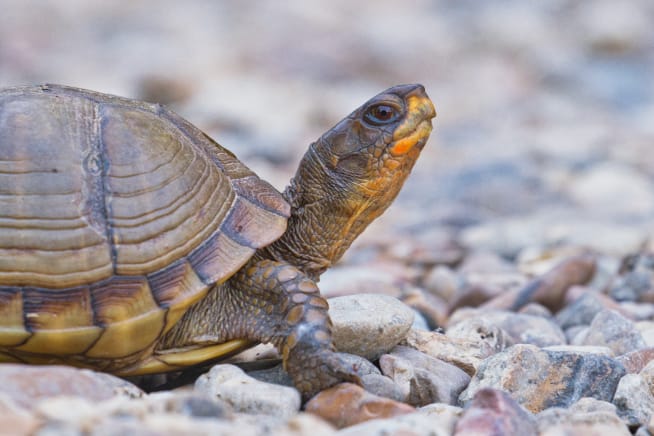I had the pleasure of capturing a remarkable close-up photo of a Three-Toed Box Turtle during my visit to the Sequoyah National Wildlife Refuge in Oklahoma.

This time of year, as I explore the tour road within the refuge, I often come across several of these fascinating turtles. It’s important to exercise caution and avoid running over them, as I unfortunately witnessed one unfortunate casualty on the road.
Interestingly, the Arkansas Game and Fish recently shared a post about turtles in Arkansas titled “Turtles taking to the streets; don’t box them in.” It seems that due to a wet and relatively cool spring, many turtles are venturing out onto roads in both rural and suburban areas, taking advantage of the abundant foraging opportunities found in ditches and grassy areas alongside bustling traffic. This behavior is often driven by their ongoing breeding and egg-laying cycles.
Back on June 2018, I also managed to photograph another captivating turtle species, the “Eastern River Cooter”, along the tour road. Initially, I spotted this particular turtle in the parking area at the start of the paved road in the Sandtown area. After capturing a series of photos in the paved parking lot, I left the area. However, to my surprise, as I returned a few minutes later, I noticed the turtle gracefully crossing the gravel road. Recognizing the unique opportunity to capture more captivating shots, I quickly retrieved my equipment.
Preparing for the shot, I carefully placed my bean bag on the ground, providing a stable surface. Then, I gently rested my trusty Fujifilm X-T3 camera, coupled with a Canon EF 100-400mm f/4.5-5.6L IS II lens attached using a Fringer EF-FX Pro adapter, onto the bean bag.
Such encounters with these remarkable creatures remind me of the delicate balance between their natural habitat and our human activities. By sharing these intimate moments through my photography, I hope to inspire others to appreciate and respect the beauty of our wildlife.
Let us continue to tread lightly and protect these magnificent creatures as they navigate their way through our world.
Camera Settings
- AV Mode
- Aperture: f8
- ISO: 1600
- Shutter speed: 1/120
- Exposure Compensation: -1.0
- Focal Length: 400 mm
Post-processing was with Luminar 3
Wildlife Photography Tip
Make sure your camera is steady and safe. Like I mentioned above, I had time to place a bean bag on the ground so that I could get a steady shot. I was also protecting my equipment from the rocks.
